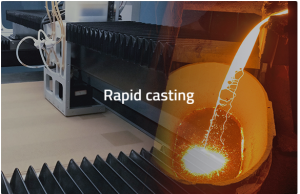Rapid Prototyping Explained
Rapid Prototyping is revolutionary in the manufacturing process wherein, in a relatively short time, a three-dimensional computer-aided design (CAD) data activates and automatically constructs the scale model of a physical part or assembly. The technology is changing the face of product development across the industries with its 3D printer applications like 3D printing, stereolithography (sla) and selective laser sintering (sls).
Benefits of Rapid Prototyping
Nothing can beat the rapid prototyping speed. Compared to traditional manufacturing processes, that could take weeks from design to prototype, rapid prototyping can deliver results within hours to days. This quick turnaround makes it ideal for iterative tests and release changes—with designers and engineers able to improve their products rapidly through physical feedback.
The cost savings are another major advantage. Quick prototyping lowers the price from the tooling and setup cost upto generally 90% in comparison with standard approaches. A prototype can be tested prior to any investment in expensive production tooling for fewer costly mistakes.
Industry Applications
The miracle compound of rapid prototyping is employed in a myriad of sectors including automotive, aerospace, healthcare, and consumer goods. In the automotive industry, it's often used to check physical car parts for fit and function. It is now being used in healthcare to print custom prosthetics and implants that help put the elements on personalized medicine platforms.

How technological advances change the game
The technologies for rapid prototyping have improved dramatically over the years. For example, 3D printers are now so accurate they can build up in many cases — layer-by-layer — down to 0.1 millimetres, permitting significantly greater accuracy in product mockups. For very high accuracy applications such as those in medical instruments or some intricate electronic assemblies this high resolution is essential.
1 Information in the World
The success of rapid prototyping can be seen in its proliferation and commercialisation. The global rapid prototyping market is estimated to grow from USD 8 billion in 2020 to over USD 20 billion by 2030, at a CAGR of approximately 9.5%, as suggested by the industry reports. This expansion is driven by the rising need for faster and more flexible product development cycles, in particular, in technology-standards companies.
Business Model Strategic Integration
The use of rapid prototyping is a capability that any organization must have to retain is market share in a rapidly changing business environment. It enables faster feedback loops and continuous improvement throughout the design process, preventing companies from going to market the wrong way and ultimately building outdated products.
Exploring Further
Modular building methodologies provide a new way to approach rapid prototyping, saving time, money, increasing product quality and customization for different scenarios. In future manufacturing processes, rapid prototyping will have an established utility as technology advances, as the applications and capabilities of rapid prototyping would continue to grow. Read more on this subject to time travel in Rapid Prototyping.